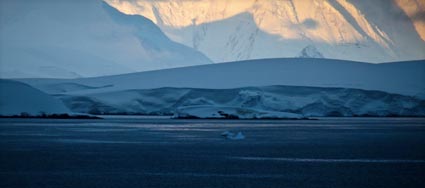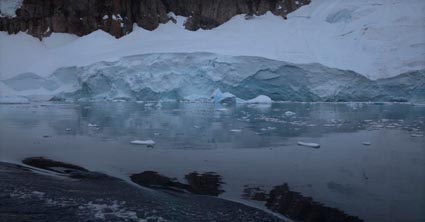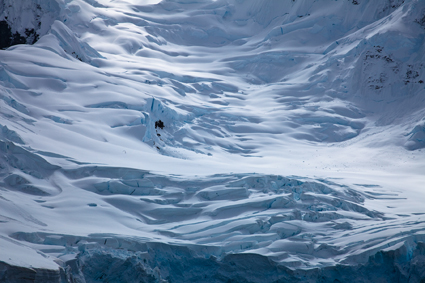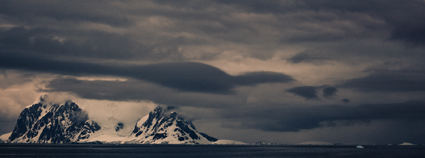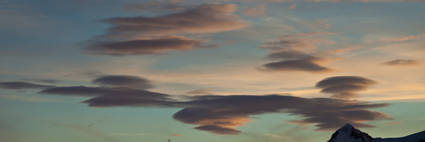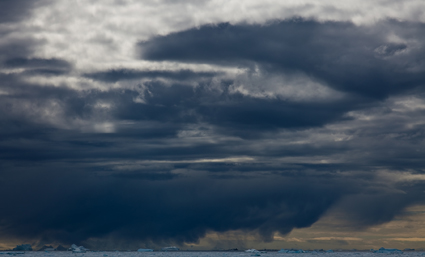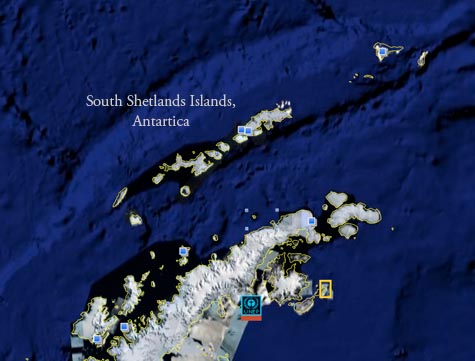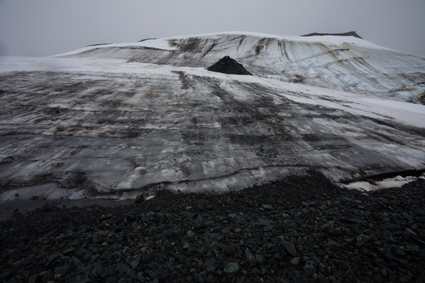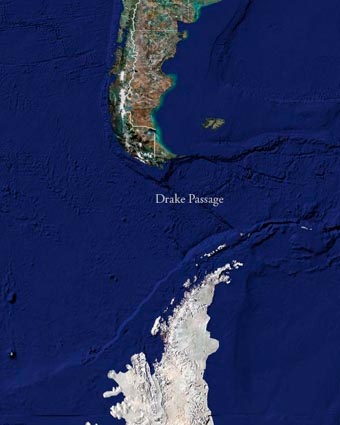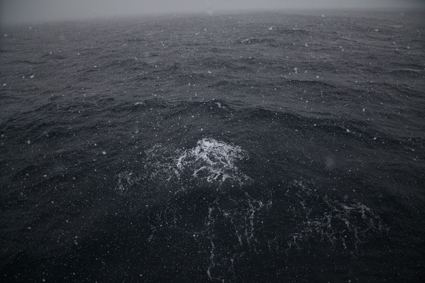
Bearing the weather in mind we headed south fast last night and got to the La Mer Channel late in the morning. On the past two trips we took several days making multiple stops along the way. But this time the weather is so poor (rain and sleet) that we can hardly see the nearby islands and mountains. Weather is constantly changing, everywhere, but particularly here. In December 2005 we sailed through and extraordinary sunset with glassy smooth waters. In February 2007 we sailed through overcast and wind,
weaving through substantial icebergs. In January 2009 we sailed through rain with relatively little ice. On the far side is Plenneau Bay (the iceberg graveyard). In 2005 we were locked out by an icesheet. In 2007 the bay was full of extraordinary icebergs. In 2009 there are just a few bergs. High wind and horizontal rain kept us from making a zodiac excursion. We hope to return and find better weather at this extraordinary location. I love photographing weather, but there’s a limit to just how much weather you can work effectively in.
Sometimes it’s best to cut your losses and move on. We decided to push south to the Antarctic Circle, traveling long distances in bad weather, with the hope that better weather is on it’s way. Getting into position for a slower return with lots of exploration. We’re out in the open ocean again with high swells. Many of the crew have never been this far south, so everyone’s excited about seeing something new.
More seminars in transit. Michael Reichmann introduced panoramic stitching. Steve Johnson followed up with more information.
Enjoy my Antarctica galleries, book, and statements.
Learn more about my workshops here.
Early registrants get discounts at home.
Members get discounts abroad.
